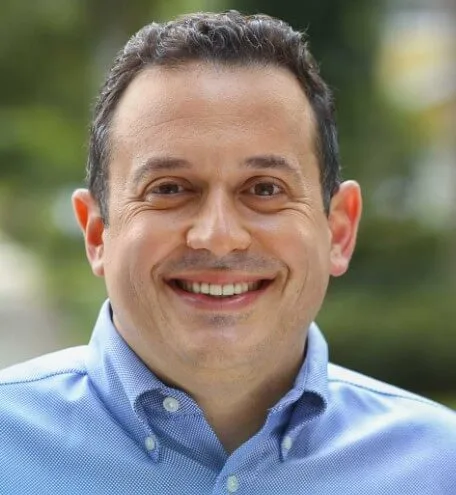
Image via AP Photo/Carlos Giusti
Phase three of reopening kicks-off amid a spike in positive cases and hospitalizations, a severe drought, and more tremors that were felt in the south of the island.
SAN JUAN — Governor Wanda Vázquez continues to reopen Puerto Rico. Experts are concerned about timing as the island experiences a spike in new Coronavirus cases and an increase in hospitalizations, a severe drought, and new tremors that were felt in the south.
As part of the reopening plan, Vázquez has extended the current curfew hours of 10 p.m. to 5 a.m. for three more weeks, announcing the update on safety measures on Sunday in a press release. These regulations will be in effect from July 1 to July 22.
The use of face masks remains mandatory, and gathering is to be avoided throughout.
RELATED: UPDATED: This Map Shows Where and Who Coronavirus Has Hit the Hardest This Week in PR
As of Monday, the Health Department reported 1,638 confirmed cases of COVID-19 and 5,612 possible cases. The death toll amounts to 153: 59 are confirmed coronavirus deaths, and 94 are deaths from similar symptoms.
The number of hospitalizations has increased in the course of a week. On June 22, there were 70 people hospitalized, while on Monday there were 104.
Vázquez warned that stricter measures could return if she sees a spike in the number of cases. Some of the new measures are aimed at preventing the agglomeration of people.
The governor’s press release does not detail the measures to be implemented at Luis Muñoz Marín International Airport in San Juan. That situation concerns experts, as several small outbreaks have already been reported in at least four municipalities during the past weeks.
A local medical task force advised Governor Vázquez to require travelers’ COVID-19 test results from a period of not more than three days before arriving on the island.
Osvaldo Soto, Puerto Rico’s secretary of public affairs, said on Monday that Vázquez will soon announce precautionary measures for the airport.
A Pandemic, a Severe Drought, and Tremors
Two situations are currently affecting the pandemic in Puerto Rico. On the one hand, seismic activity—recurrent in the southern region of the island since 2019—has resumed. On Sunday, numerous tremors were felt, several of them registering more than 4.2 on the Richter scale.
A severe drought affecting the island for the past three months is the other concern.
The water levels of the Carraízo reservoir to the north of Puerto Rico have been decreasing, to the point that on Monday morning Vázquez declared a state of emergency. More than 26% of the island is experiencing severe drought conditions while another 60% is experiencing moderate drought, according to the United States Drought Monitor.
Water rationing measures affecting more than 16,000 clients have already been imposed earlier this month in some municipalities in the island’s northeast region.
On Monday morning Gov. Wanda Vázquez declared a state of emergency because of the drought. She said 21 of 78 municipalities are affected by the severe drought while another 29 by moderate drought.
An additional 12 municipalities face abnormally dry conditions. The worst of the drought is concentrated in Puerto Rico’s southern region, which continues to be affected by aftershocks following a 6.0-magnitude earthquake that hit in early January and caused millions of dollars in damage.
Vázquez’s announcement comes amid criticism of her administration for not dredging reservoirs, which would eliminate sediment and avoid excessive loss of water.
Doriel Pagán, executive director of Puerto Rico’s Water and Sewer Authority, said the utility company has been in conversation with the U.S. Federal Emergency Management Agency since Hurricane María about a $300 million dredging investment. She blamed the lengthy process on the number of studies and analyses needed, which would also require FEMA’s approval.
The Water and Sewage Authority (AAA by its Spanish initials) announced today a water rationing plan that will affect 140,000 clients. It will start on July 2 and will have 24 hours intervals to serve two areas.
Pagán urged people to not stockpile water excessively because this would make the situation worse. Officials asked for everyone to wear masks and maintain social distance if they seek water from one of 23 water trucks set up across the island.
Fernanda Ramos, a meteorologist with the U.S. National Weather Service in San Juan, said ongoing dry conditions will be interrupted by thunderstorms forecast to affect the island on Wednesday and Thursday.
“However, we are not expecting enough rain…to solve the problem we’re seeing,” she said.
RELATED: Trump Reverses 100 Environmental Regulations That Directly Affect Puerto Rico
What’s Reopening During Phase Three?
These are the sectors that may reopen and activities that may resume on July 1:
1. Some government employees must return to work on July 1. Public agencies will reopen on July 6. They must follow measures established by the local initiatives that manage the risks and control exposure to the coronavirus.
2. Universities will be allowed to reopen only for purposes of working on COVID-19 protocols for the upcoming school year. These protocols must follow the recommendations of the Centers for Disease Control and Prevention (CDC) and the local Department of Health, as well as comply with Puerto Rico Occupational Safety and Health (PR-OSHA) standards.
3. Public and private schools must also prepare a health and safety protocol. Schools are scheduled to open in mid-August. Personnel should prepare school buildings and come up with logistics for the upcoming school year. Students are not yet allowed to visit the school facilities.
4. Casinos may reopen at 75% capacity. Restaurants and businesses can also serve at the same capacity. This is an increase from the 50% capacity of the previous phase.
5. Concert venues can reopen for in-person events and concerts. Venues will be required to follow CDC, local health department, and PR-OSHA regulations. Rules include a six-feet-distancing parameter, the mandatory use of masks, frequent handwashing, and the daily sanitizing of establishments.
6. Collective and individual sports training, as well as resuming sports events involving professional leagues, will be allowed. Contact sports, such as boxing, will be the exception. All must follow regulations from the local Department of Sports and Recreation.
7. Lotería Electrónica and Lotería Tradicional lottery draws will resume, as well as local transportation comprising buses and the Tren Urbano rapid transit.
8. Cemeteries may open, observing precautionary measures. Funerals will be allowed until no later than 8 p.m. They must follow social distancing and sanitizing protocols.
The Associated Press contributed to this story.
RELATED: ‘Only the People Can Save Puerto Rico’: Activist Arrested for Feeding People Has a Message
Politics

Teamsters and UPS Reach Tentative Deal to Avoid Strike, 340,000 Workers to Get Raises
The tentative deal represents a huge win for full- and part-time UPS Teamster workers, who would get significant pay raises and better working...



One Republican Senator Is Blocking 265 Military Promotions, Leaving the Marines Without a Confirmed Leader
Sen. Tommy Tuberville's decision means these military officers are not getting the pay raises they’re owed, cannot move their families to wherever...
Local News



Teamsters and UPS Reach Tentative Deal to Avoid Strike, 340,000 Workers to Get Raises
The tentative deal represents a huge win for full- and part-time UPS Teamster workers, who would get significant pay raises and better working...



One Republican Senator Is Blocking 265 Military Promotions, Leaving the Marines Without a Confirmed Leader
Sen. Tommy Tuberville's decision means these military officers are not getting the pay raises they’re owed, cannot move their families to wherever...




